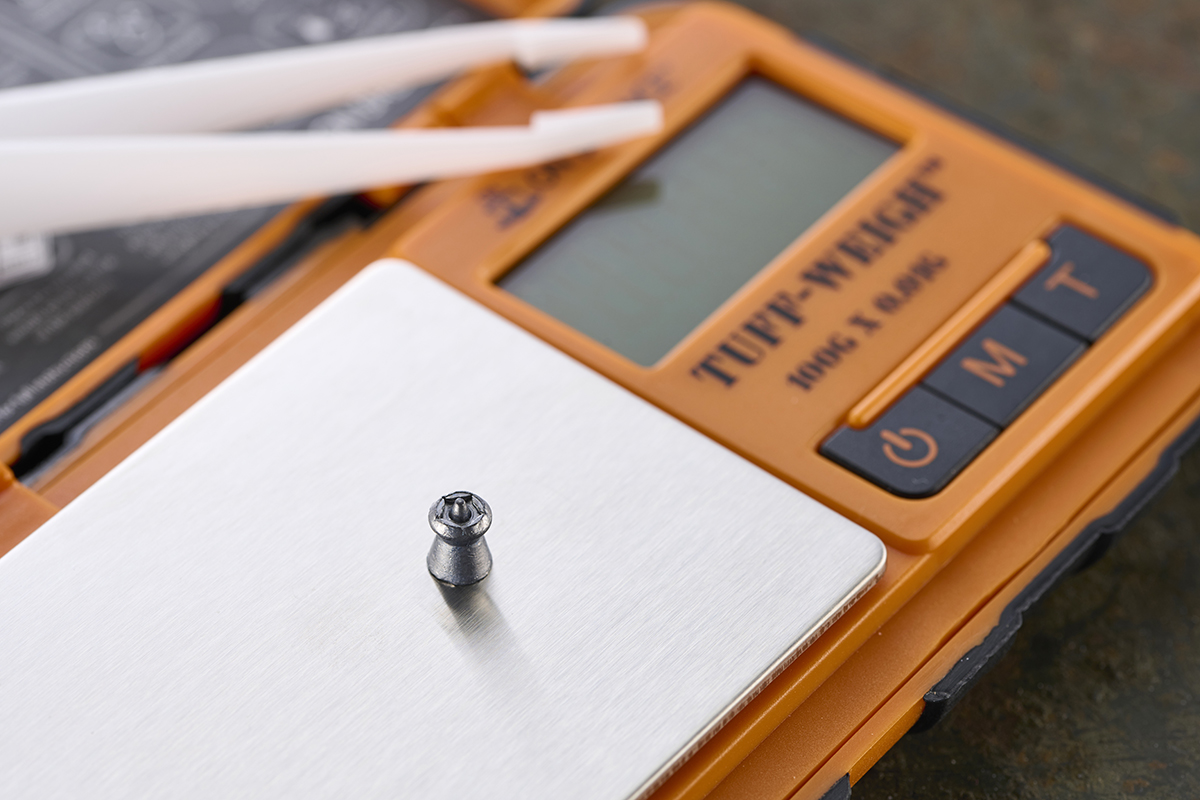BSA Silver Star .22
Mike Morton turns silversmith and tests the BSA Silver Star .22, a hybrid round part hollowpoint and part pointed pellet

BSA Silver Star .22
I own up to having a bias in favour of domehead designs when it comes to lead pellets designed for sub-12 ft-lb air rifles. However, I’ve been forced to admit that there are several pellets of very different designs out there that are capable of great results as well. One such pellet is the BSA Silver Star in .177 calibre, which knocked me over with its accuracy despite its aerodynamic appearance when I tested it back in issue 160. This time I’m looking at the BSA silver Star .22 calibre.
Silver Stars come in a screw-top tin of 200 in .22. They are part of BSA’s new premium pellet range, which includes the Gold Star domehead pellets, Black Star hollowpoints and Green Star lead-free domeheads, all of which are available in both .177 and .22, and can be bought in sampler packs as well as tins. Like their little brothers, BSA Silver Star .22 is made of a relatively hard, crush-resistant lead alloy, and have a skirt with relatively thick walls.
My standard procedure after receiving a new tin of pellets is to tip them all out onto a microfibre cloth for inspection. All were undamaged and clean. For anyone new to airgun shooting this comes as no surprise, but it wasn’t all that long ago that buying a tin of pellets, regardless of manufacturer, was something of a lucky dip, with a few pellets of a different calibre sometimes being thrown in for good measure.
Back to the Silver Stars. These pellets have a head size of 5.50mm and an overall length of 7.22mm, making them well suited to multi-shot magazine use. And in a multi-shot is where these pellets will excel. BSA describes them as a short-range hunting pellet, thanks to that unusual hybrid head.
The hollow is cleanly formed, and while the outside is perfectly round to better engage with the rifling in the bore, the interior is segmented into a hexagonal shape to assist deformation on impact. The point itself is similarly cleanly formed, but instead of coming to a sharp point like some other designs, the tip is flattened. I’m guessing this makes the pellets more practical to handle, with no sharp point to skewer your fingers, as well as being easier to manufacture consistently.
BSA lists the weight on the tin as 16.36gr. Having weighed a random sample of 50 pellets with my digital scales, I found 15 came in at 16.2gr, while 35 measured 16.4gr, giving an average weight of 16.34gr.
Key specifications
Pellet: Silver Star
Supplied by: BSA Guns (bsaguns.co.uk)
Type: Hybrid hollowpoint and pointed diabolo
Calibre tested: .22
Head size: 5.50mm
Length: 7.22mm
Supplied in: Tin of 200
Price: £7.50
Advertised weight: 16.36 gr
Measured weight: 16.34 gr
Uses: Pest control
BSA Silver Star .22 – test conditions
This shoot was carried out on one of the many uncomfortably hot, sticky and sunny days that we experienced over the summer. It had nevertheless been quite breezy during this period, though the breeze was minimal on test day.
All shots were taken at self-adhesive 1” Birchwood Casey Target Spots stuck to white A4 card, and my .22 rifle of choice was my R-10 SE. I always clean the barrel before testing new ammo, and put a couple of magazines’ worth of pellets through the bore while setting my zero of 30 yards.

Silver Stars are packaged 200 per tin in .22 calibre, and have an RRP of around £7.50, meaning they cost less than 4p per shot
BSA Silver Star .22 – downrange
The R-10 was supported with bench bags front and rear filled with heavy ABS plastic chips. With the rifle and scope zeroed at 30 yards, I carried out my velocity testing.
Having fired 10 shots over my Shooting Chrony F1, average muzzle velocity was 565.0ft/sec from a muzzle energy of 11.59ft-lb. The all-important variation in velocity was 9.0ft/sec, with anything under 10 being pretty good.
In terms of accuracy testing, I was initially disappointed with my 30-yard results, with the pellets being too wayward for my liking. However, I had to remind myself what these pellets were designed to do – hit quarry animals at shorter ranges, and hit them hard. With that lesson learned I restructured my shoot at 15, 20 and 25 yards, although I did maintain my initial 30-yard zero.

The point should deliver better initial penetration, while the segmented, hexagonal hollow is designed to assist expansion inside the quarry animal
At 15 yards, the BSA Silver Star .22 gave me a five-shot group measuring a tiny 8mm centre-to-centre, with me using 10mm of holdunder. At 20 yards the group size was even smaller, this time measuring 6.9mm centre-to-centre and requiring 16mm of holdunder.
This is a phenomenon I’ve witnessed numerous times, and believe it may be to do with the pellet requiring a certain amount of flight time to properly stabilise. Back at 25 yards, my revised maximum range, group size expanded to 15.9mm centre-to centre – less than the diameter of a five pence piece – with me applying 24mm of holdunder.
While a target pellet merely has to fly true and strike the killzone, a hunting or pest control round has to be capable of sufficient accuracy as well as sufficient energy transfer to deliver a humane kill. And at shorter ranges, Silver Stars definitely deliver both.

Silver Stars are typical of the high manufacturing standards exhibited by BSA’s new line of high-grade pellets, with four different types to choose from
Verdict
Airgun shooters looking for a ratting or feral pigeon round should grab a tin of Silver Stars, because after trying out these hybrid hunters they may well agree that they’ve struck gold








